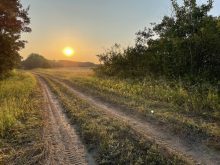WINNIPEG — A sustainable food organization is concerned that “green” land grabs for carbon removals and biodiversity offsets are a threat to small farmers and food production around the globe.
The International Panel of Experts on Sustainable (IPES) Food Systems released a report May 13 about the demand for global farmland and the consequences of that demand.
“The study exposes the alarming escalation of land grabbing in various forms, including through ‘green grabs’, opaque financial instruments and speculation, rapid resource extraction and intensive export crop production,” says a IPES news release.
Read Also

Canola oil transloading facility opens
DP World just opened its new canola oil transload facility at the Port of Vancouver. It can ship one million tonnes of the commodity per year.
“Major new pressures are emerging from … carbon and biodiversity offset projects, conservation initiatives and clean fuels…. Huge swathes of farmland are being acquired by governments and corporations for these ‘green grabs.’ ”
Nettie Wiebe, a former leader of the National Farmers Union, Saskatchewan farmer and former professor at the University of Saskatchewan, was one of the authors of the report.
Wiebe said she is concerned that investors are dumping billions into farmland and pushing aside young producers.
“Farmland is increasingly owned not by farmers but by speculators, pension funds and big agribusinesses looking to cash in. Land prices have skyrocketed so high it’s becoming impossible to make a living from farming. This is reaching a tipping point — small and medium scale farming are simply being squeezed out.”
Ted Cawkwell, a farmland real estate agent in Saskatoon, said earlier this year that this is not the case in Saskatchewan, which has 40 to 45 per cent of Canada’s agricultural land and has rules around who can own the land.
Pension funds are prohibited, as are publicly traded companies.
He said only Canadians are allowed to purchase Saskatchewan farmland, so investors and investment groups are a small player in the province’s land market.
“When I hear, ‘oh, the investors are (pushing) values up’ … it doesn’t hold any water. Two per cent of the market can’t move the market,” he said earlier this year.
“The investors don’t change farmland values. What affects farmland values is the profitability of the farmers. Number one and final.”
However, some countries and states are more open to farmland investment. The IPES report claims that land prices are rising around the globe because of investors and money dumped into agricultural-related climate projects.
“Between 2005-17, pension, insurance and endowment funds invested around $45 billion in farmland,” IPES says.


















